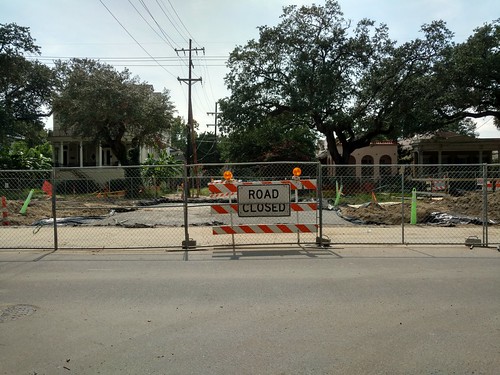
Hey we're rich!
Mayor Mitch Landrieu's administration and the New Orleans City Council will have a bit more money to play with as they craft the city's 2017 budget, largely due to expected increases in sales and property tax revenue.On the other hand, there's plenty that needs paying for. In most American cities, there is no shortage of infrastructure work to do. New Orleans is certainly no exception to that.
The city expects to take in about $594 million in taxes, fees and other revenue next year, or 2.2 percent more than it expects to collect by the end of 2016, Finance Director Norman Foster told the city's Revenue Estimating Conference on Monday.
With potholes, sinkholes, dips, cracks, years of patches on patches and entire blocks that can be navigated only by expertly executed turns, everyone knows New Orleans' streets are in bad shape.The good news in New Orleans right now is we've still got a fair amount of federal money to throw into that work. The bad news is, the money we do have isn't going to be enough.
So bad, in fact, that the average condition of all roads in the city rates less than 43 on a scale of 100, and nearly two-thirds of the streets are in "poor" or worse condition, according to a new study.
The road survey, conducted by Stantec at a cost of about $555,000, represents the first comprehensive look at exactly how bad New Orleans' streets are. It will play a prominent role in the city's ongoing planning about how to fix the streets, including how to spend about $2 billion in FEMA money for road and drainage work in the coming decades.Even so, $2 billion is not exactly nothing. It's enough, in fact, to fire off a #FixMyStreets program the city is already describing as bigger than the SELA drainage project.
Even that money represents only a portion of the $3.6 billion the report estimates would be needed to bring the streets to an average level of "fair" over the next 10 years — and to achieve that the city would need to do nearly all that work immediately.
"Everyone is impatient (to fix the roads), most particularly the mayor. But this money is going to hit the streets over the next couple of years, and it's going to be on a larger scale and magnitude than even the SELA projects," Berni said, referring to the major, mostly Uptown drainage projects that have been under construction for years.So get ready for more road work, basically. That sounds like a headache. But really we should just be thankful that we can afford to do some of this stuff now. Because that probably won't be the circumstance much longer.
"But (with SELA) you're only talking about some major arteries that impacted several neighborhoods," he said. "In this instance, you're talking about full reconstruction of major parts of at least a quarter of the east bank neighborhoods, if not half, over a five-year time frame."
Sales tax revenue is projected to increase by about 3 percent next year, Foster said.Combine that with other signs that the regional economy may be slowing and you start to yearn for the days of "bucking the trend." But after this $2 billion in FEMA money is spent, where will the trend-bucking stimulus come from?
"The city's economy has done very well, and we anticipate more tourism growth," he said.
At the same time, the city has not seen as much sales tax growth this year as it had expected. Officials had planned for 3.5 percent growth in sales tax collections this year but so far have only seen about half of that, Foster said.
No comments:
Post a Comment